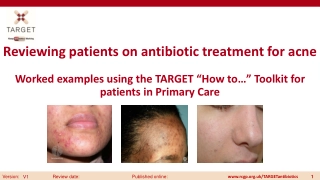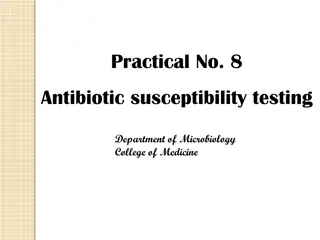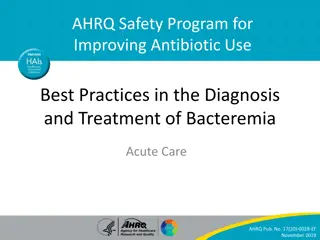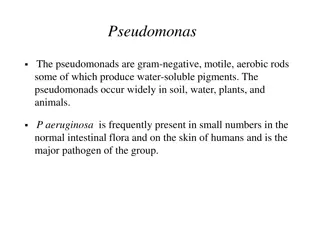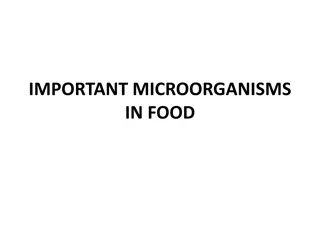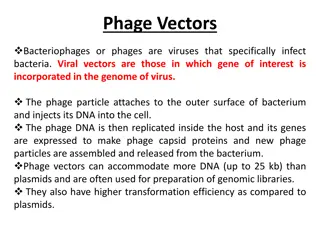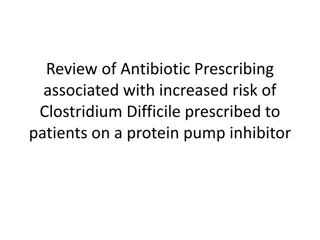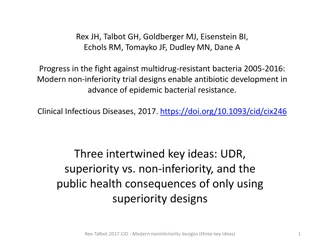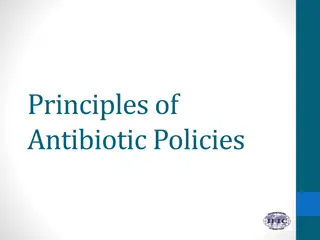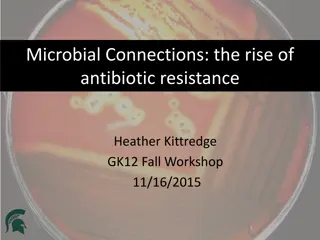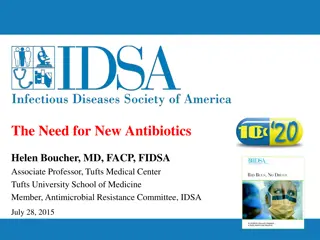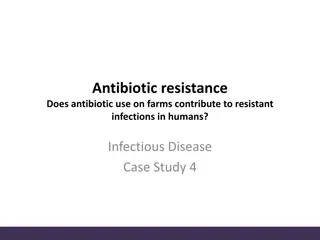Understanding Bacteriophages and Antibiotic Resistant Bacteria
Explore the relationship between bacteriophages and bacteria, the survival advantage of polyvalency, and the impact of unfavorable conditions on species survival. Discover how manipulation of experiment variables helps establish resistance thresholds and how compounded negative effects affect species resilience. Uncover the significance of biological polyvalency in combating antibiotic resistant bacteria.
Download Presentation

Please find below an Image/Link to download the presentation.
The content on the website is provided AS IS for your information and personal use only. It may not be sold, licensed, or shared on other websites without obtaining consent from the author. Download presentation by click this link. If you encounter any issues during the download, it is possible that the publisher has removed the file from their server.
E N D
Presentation Transcript
Essential Questions What is the relationship between bacteriophages and bacteria? How does polyvalency allow bacteriophages to have a survival advantage? How do unfavorable conditions affect a species survival? What purpose does manipulating an experiment s variables have in understanding the establishment of resistance thresholds? How would the compounded results of multiple negative effects affect a species, and how does this mimic conditions in real life?
Essential Understandings Bacteriophages are viruses that exploit bacteria by lysing the bacteria in order to reproduce. Bacteriophages are host-specific; those that are able to lyse various bacteria (polyvalency) have a survival advantage. Antibiotic resistant bacteria pose a serious threat to human health, and alternatives to traditional medicines may prove to be helpful, especially using naturally occurring bacterial controls such as phages. Selecting for genetic advantages may best be accomplished by sequential tests rather than simultaneous tests; likewise, the effect of compounded challenges may be greater than each challenge. Organisms thrive within abiotic tolerances; beyond these parameters, they become stressed and may die unless certain individuals have (genetic) advantages not found in the general population.
Aligned Terminology Germination Salinity Fusarium Polyresistance Lysis Polyvalency Bacteriophages Antibiotic Resistant Bacteria
Background Information Biological polyvalency is the ability of an organism to infect or destroy multiple toxins or organisms. Bacteria have an ancient enemy: bacteriophages (sometimes referred to as phages). Bacteriophages are viruses that are usually specific to the bacterial strain they lyse and destroy. [Review lysis, if necessary.] New research into phages that are polyvalent shows promise to destroy bacteria, especially for antibiotic resistant bacteria (ARB).
Background Information Bacteria exposed to bacteriophages may have some level of survivability. Survivors may evolve immunities during this timeless dance between predator and prey, antagonist and protagonist. Resistance to multiple negative agents pathogens or environmental conditions allows greater survival of the species when confronted with a range of challenges, especially when these challenges occur simultaneously and overwhelm a population.
Background Information A guiding principle of evolutionary theory is that genetic variability may allow for resistance or susceptibility to antagonists. Thus, the survivors of exposure to a normally lethal antagonist are those naturally selected for the continuation of their species; all other factors being equal, the variability found in germplasm may allow for some survivors. For bacteriophages, it allows them to lyse (and reproduce) by exploiting multiple strains of bacteria.
Instructional Considerations With the degree of differences in high school laboratory resources, several of this investigation s options are flexible enough to offer proof of concept for polyvalency and polyresistance for the instructor. Students will investigate bacteriophages or organisms for polyvalency or polyresistance. The test organisms could be bean or radish seed, protists, small crustaceans such as brine shrimp, worms (nematodes, earthworms), or even bacteriophages. The antagonists may include different concentrations of saline, bleach, triclosan, strains of bacteria, or different temperatures. Four options are presented in this activity.
Instructional Considerations Option 1: Bacteriophage-Bacteria. For labs equipped for, and students and instructors familiar with, Biosafety Level 2. Facilities should have laminar flow benches, micropipettes, microwave ovens for agar, or comparable equipment. Option 2: Mung bean germination with heat and salinity. For laboratories, instructors and students with less access to, or experience with, the facilities or practices needed with the bacteriophage option. Still, it should prove to be a useful investigation for how genetic variability can be manifested through tolerances to unfavorable conditions. Option 3: Fusarium. To test mung beans for resistance to a fungal disease called wilt, caused by the fungus Fusarium, and followed by Option 4, which combines heat, salinity, and the wilt disease.


